Designing a rose garden – for naturalistic and formal schemes
Follow this expert advice on rose garden design to discover how to incorporate the queen of flowers into traditional and modern garden schemes
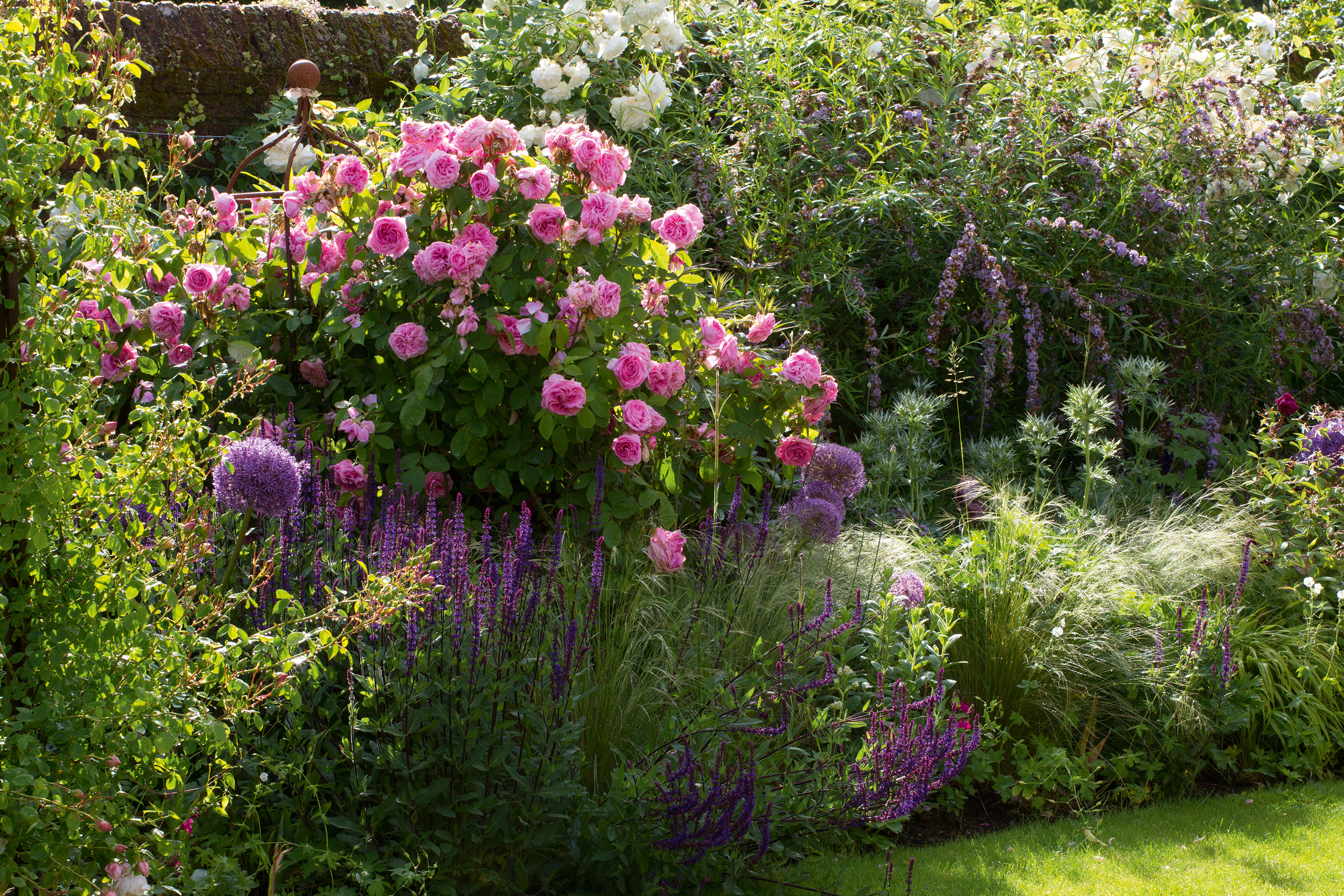

Rose garden design has been popular for centuries and roses have an enduring prominence in our gardens, putting on a show-stopping flowering display and prized for their rich variety of colors, blooms, scents and forms.
But while rose garden ideas are often associated with more traditional garden design, either in more formal, classical settings, or as part of a quintessential cottage garden or traditional herbaceous border, they work just as well in a contemporary, naturalistic scheme.
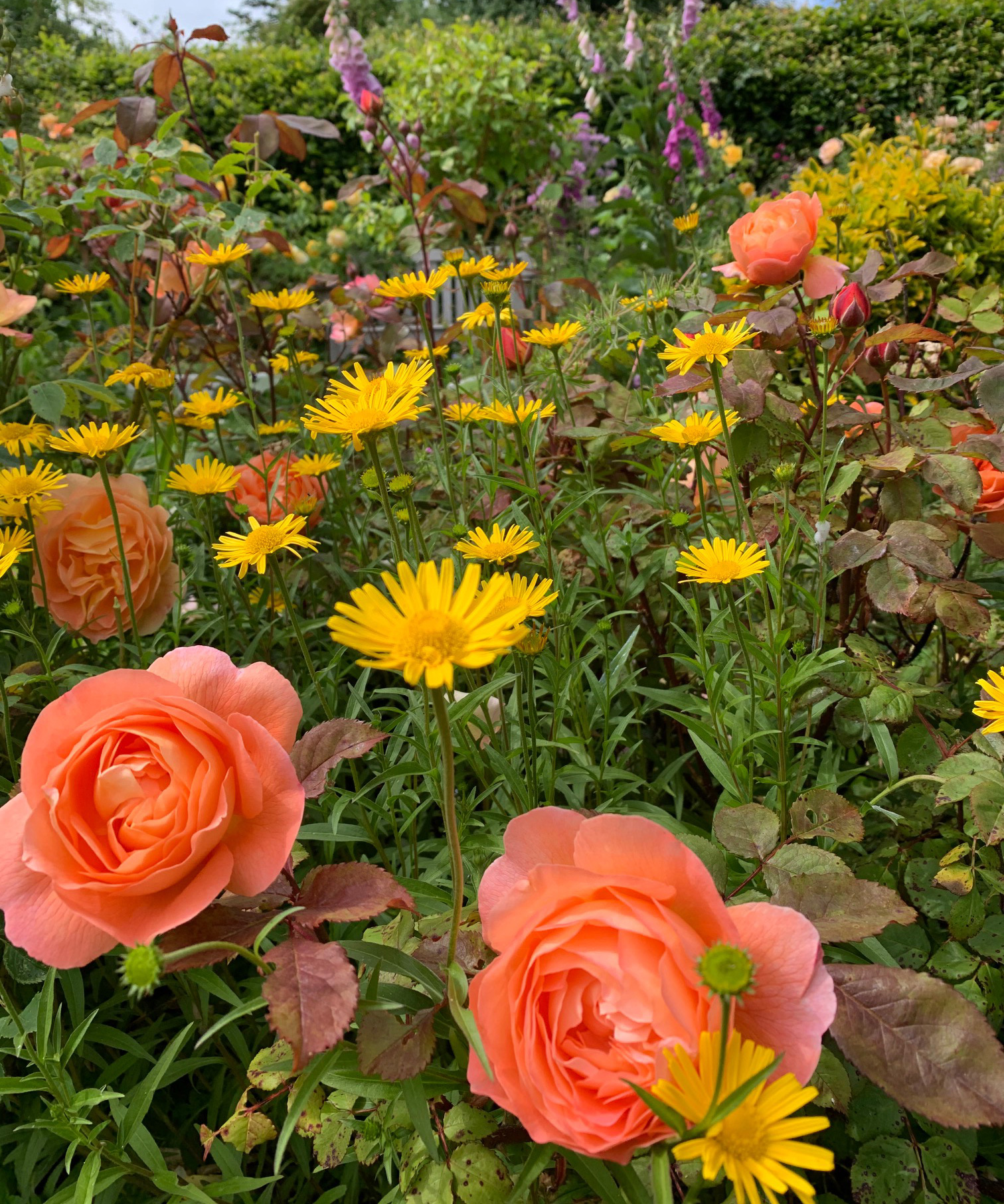
Rose garden design – formal or informal?
'When deciding on the layout of a rose garden design, consider how formal or informal you want it to be, as this will dictate the type of roses planted and the design,' explains Michael Marriott, world leading rosarian and rose garden designer.
Some people can feel intimidated by the thought of growing roses – but don't be. 'Roses are simply flowering shrubs and that’s how you should use, and treat them,' explains rose consultant and designer Paul Zimmerman.
The style of the rose garden design or area should take its cue from the overall garden design and the proximity to the house. You should also consider the conditions in your garden or the chosen spot to ensure you plant roses where they will have the best chance of success.
'Areas close to the house tend to be more architectural, so you could plan a more formal, traditional arrangement, surrounded by low hedging, such as if you were designing a parterre garden.
'In a contemporary setting the pattern could be asymmetric, extending the lines of a terrace or paved area that in turn links with the house,' advises garden designer David Stevens.
'Many roses are also tough, resilient and wild at heart, and can offer longer seasonal interest, making them well-suited to contemporary, naturalistic planting design and relatively low maintenance planting,' explains award-winning garden designer Colm Joseph.
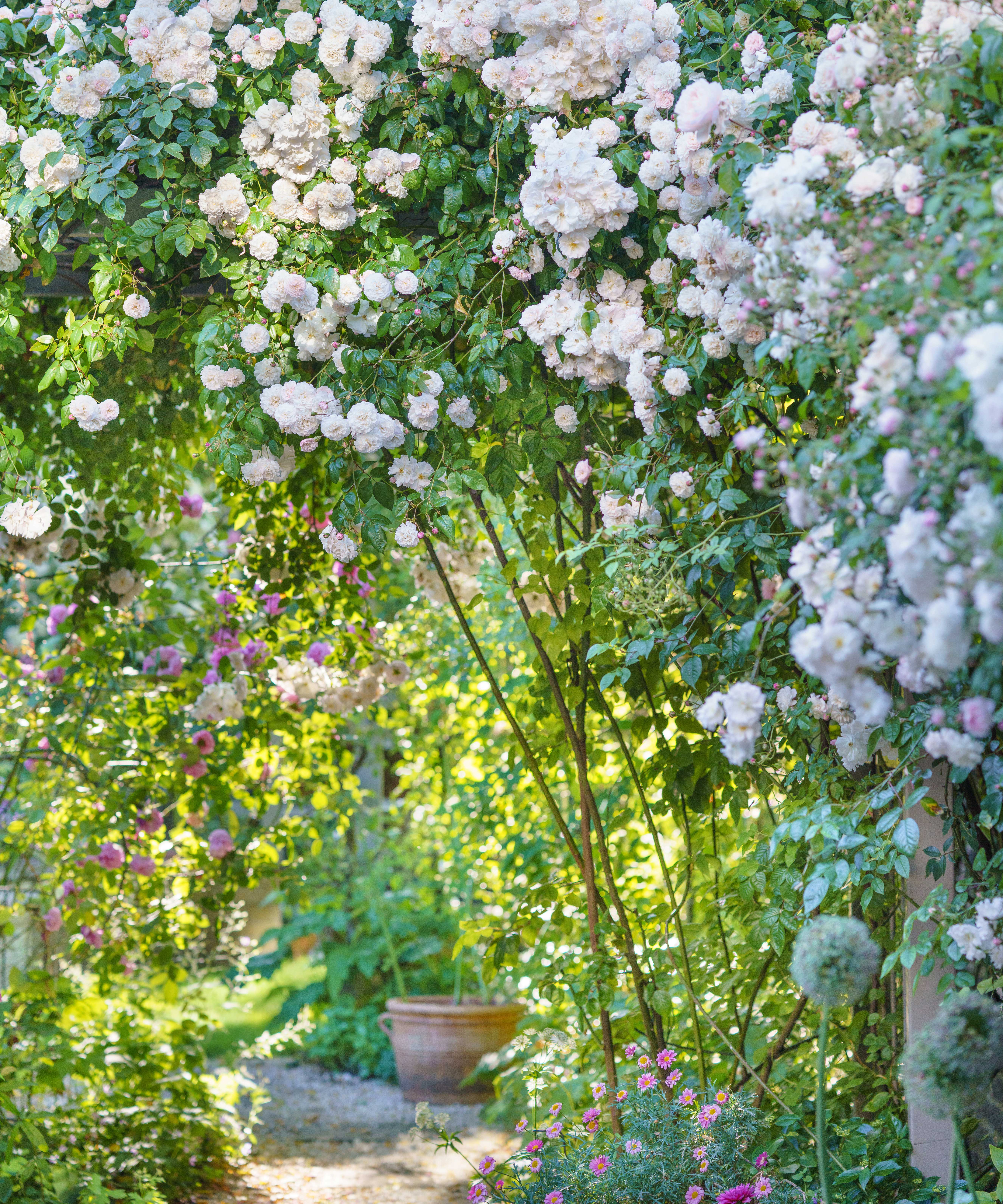
How do you layout a rose garden?
When it comes to how to layout a rose garden, 'the more you are surrounded on every level by roses, including climbing roses and ramblers on walls and overhead, plus shrubs, tree roses – or standards – and weeping standards at ground level, the more you can achieve an atmosphere of romance and elegance,’ advises designer Jo Thompson.
'A formal rose garden design may comprise a number of carefully laid out beds in a symmetrical pattern and will require more neat and upright roses, such as the Hybrid Teas, Floribundas and some of the English Roses,' advises Michael Marriott.
'An informal rose garden design may be just one or more informally shaped beds, filled with more shrub type varieties like many of the old roses, hybrid musks and English Roses. The extreme of the latter would be species or species type roses planted in a meadow,’ Michael adds.
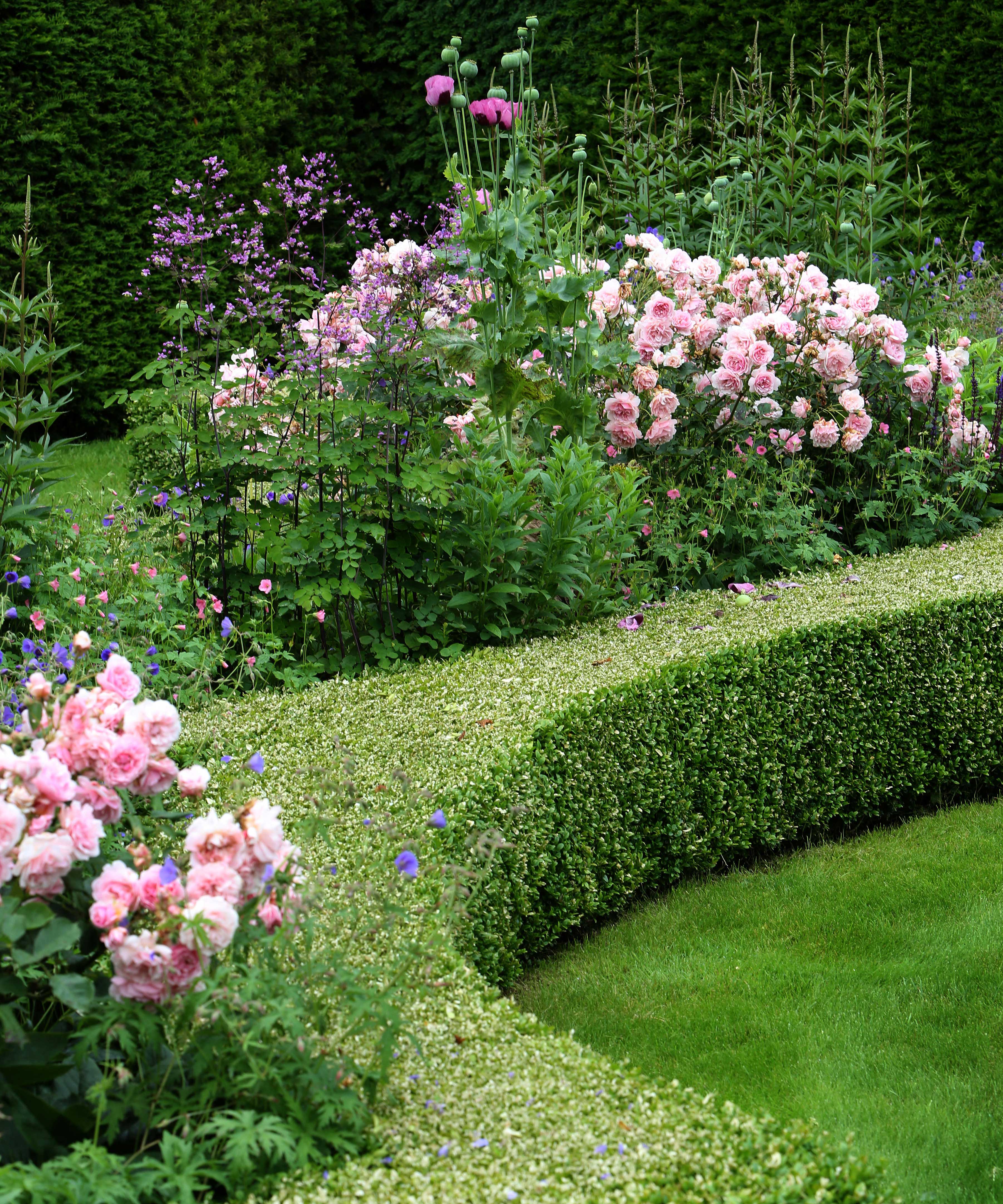
As a practical point, don't make the flower bed ideas too wide. 'You want to be able to get close to the roses to admire and smell them without trampling the underplanting. Leave space for maintenance and access,' says designer Richard Miers.
'There are roses that will suit every garden aspect, but south, east, west are best to give you the most choice of variety. Ideally you want to be able to see the roses from the house, so planting them not too far away is a good idea,' Richard adds.
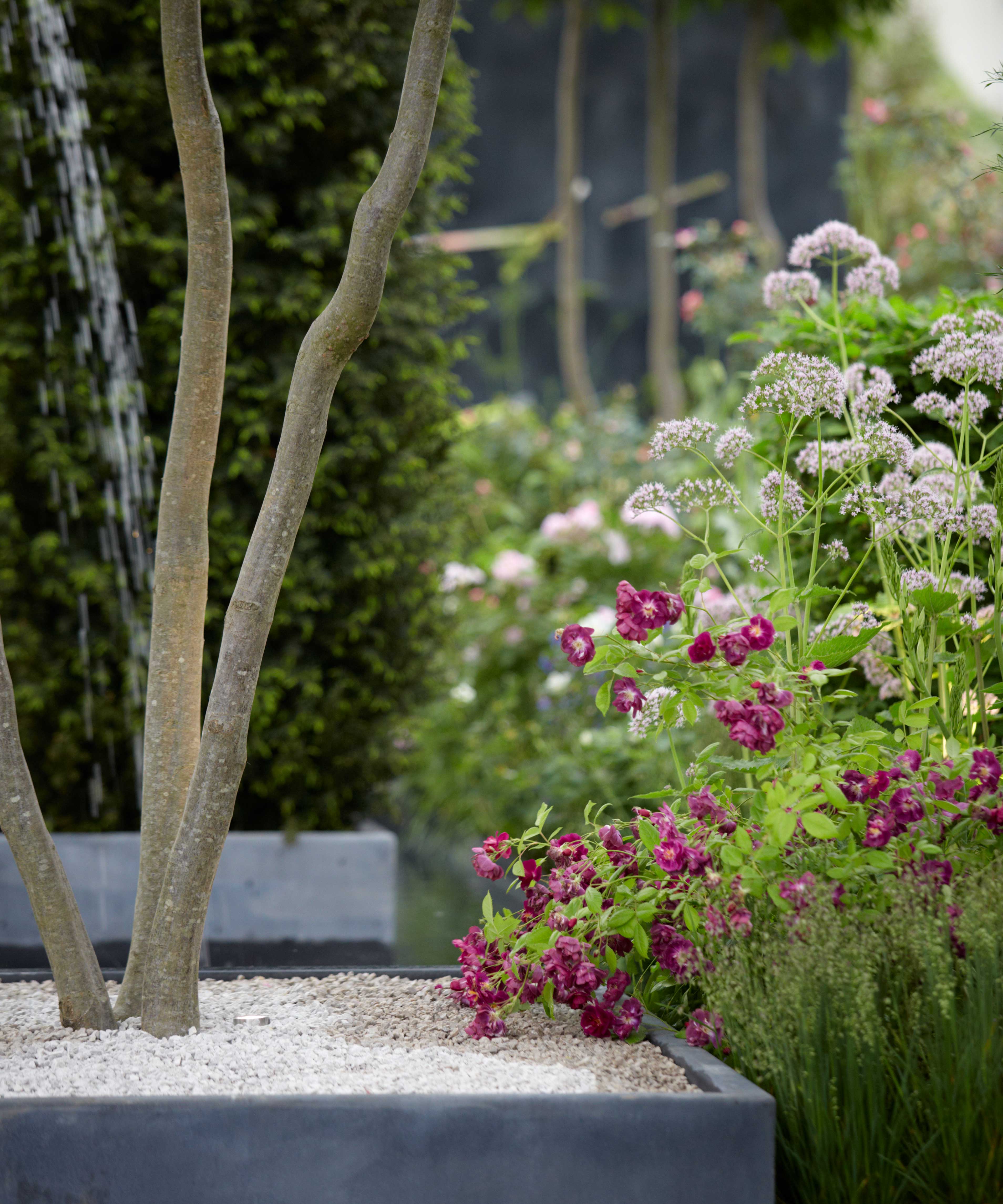
How can you create a naturalistic, modern rose garden design?
'To create a more naturalistic and contemporary rose garden design, plant roses in among a selection of ornamental grasses and perennials, where the goal is to let the roses intermingle with the other plants,' explains designer Colm Joseph.
He offers the following tips for incorporating roses into naturalistic planting designs:
- When choosing your roses, go for those with simpler, open flowers that are closer to the wild or hedgerow roses rather than anything too blousy or ornamental. Or consider using wild or ‘species’ roses, such as Rosa virginiana or Rosa glauca, which are often very tough and disease resistant. Although these wild roses usually only flower once in early summer, they produce beautiful hips for fall and winter interest.
- In terms of color, go for a more natural and simple palette - so whites, soft pinks and purples rather than anything too bright or strongly colored.
- Choose roses that produce hips as a great way to extend seasonal interest, reduce maintenance and embrace a more naturalistic look. Don’t spend time deadheading roses, just let the flowers fade naturally so you can enjoy those beautiful hips later in the year.
- When choosing perennials and grasses to go alongside the roses, select plants that offer long structural presence or flowering interest from spring into winter, avoiding anything that is likely to die back in mid-summer or flop over in early fall. Grasses like Sesleria autumnalis, smaller miscanthus varieties, like ‘Kleine Silberspinne’, Calamagrostis brachytricha or Calamagrostis x acutiflora ‘Karl Foerster’ can all work well with roses. Perennials like Salvia nemorosa ‘Amethyst’, Aster ‘Little Carlow’, or Betonica officinalis ‘Hummelo’ are also good companion plants.
- There are many smaller, modern rambling roses that work beautifully in naturalistic planting schemes. To keep things looking more natural and to reduce your maintenance, don’t support these rambling roses on trellises – just let their stems arch and mingle with the adjacent grasses and perennials. These modern rambling roses can also be cut back quite hard each year, in much the same way as the perennials and grasses, making annual maintenance relatively easy.
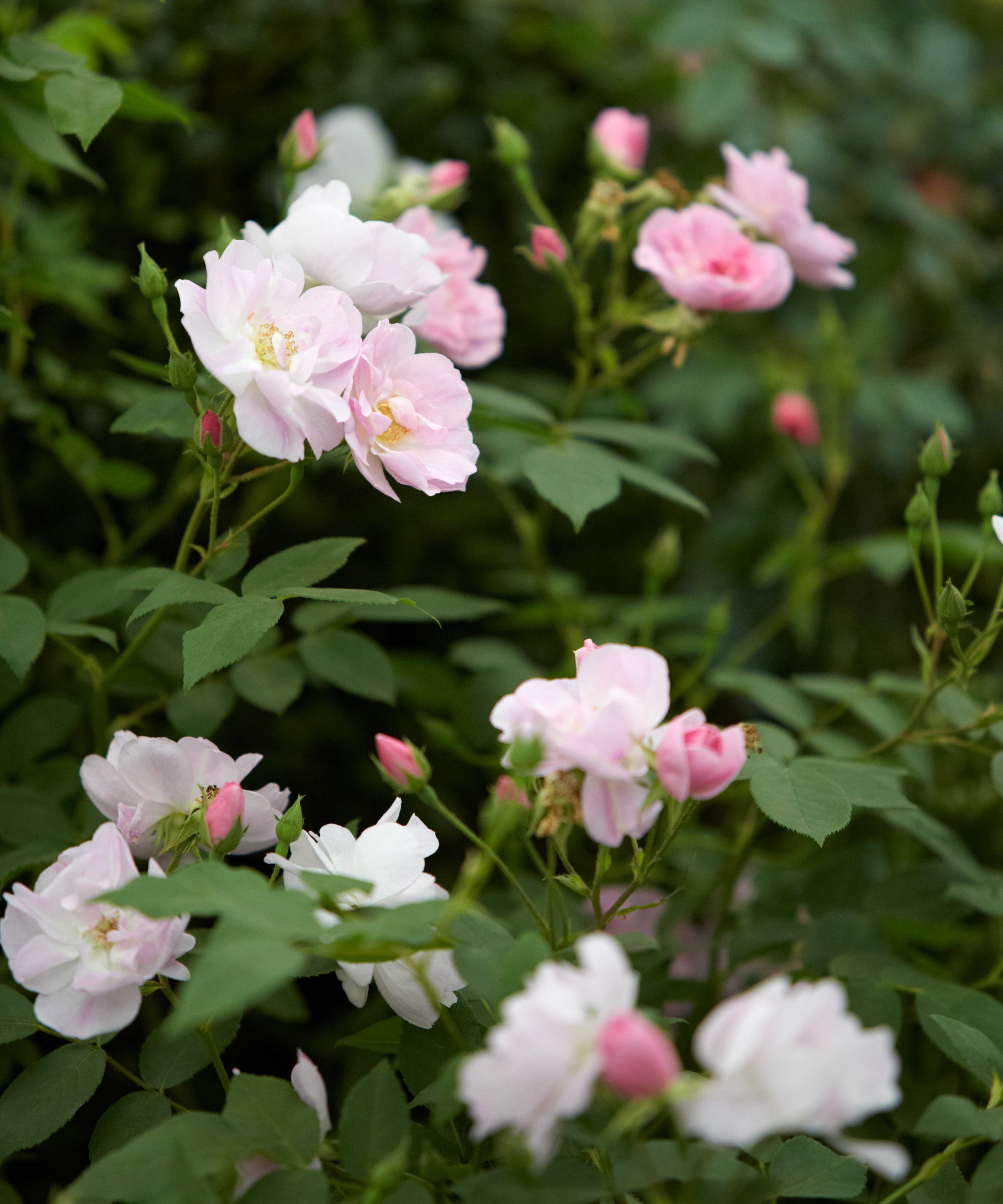
What rose varieties can you include?
'One of the great joys of roses, is that they are almost endlessly variable, from tiny little plants 12" tall, to great monsters growing 40ft plus up trees, and from tiny flowers less than an inch across to ones that are 7-8" across and from 5 petals to 200,' explains Michael Marriott.
'They include every color except blue, some are bicoloured and there is a wide range of scents, so include a real variety in your rose garden design,' he adds.
As with all plants, you should choose the rose varieties to suit the space they are going to occupy, and the surroundings.
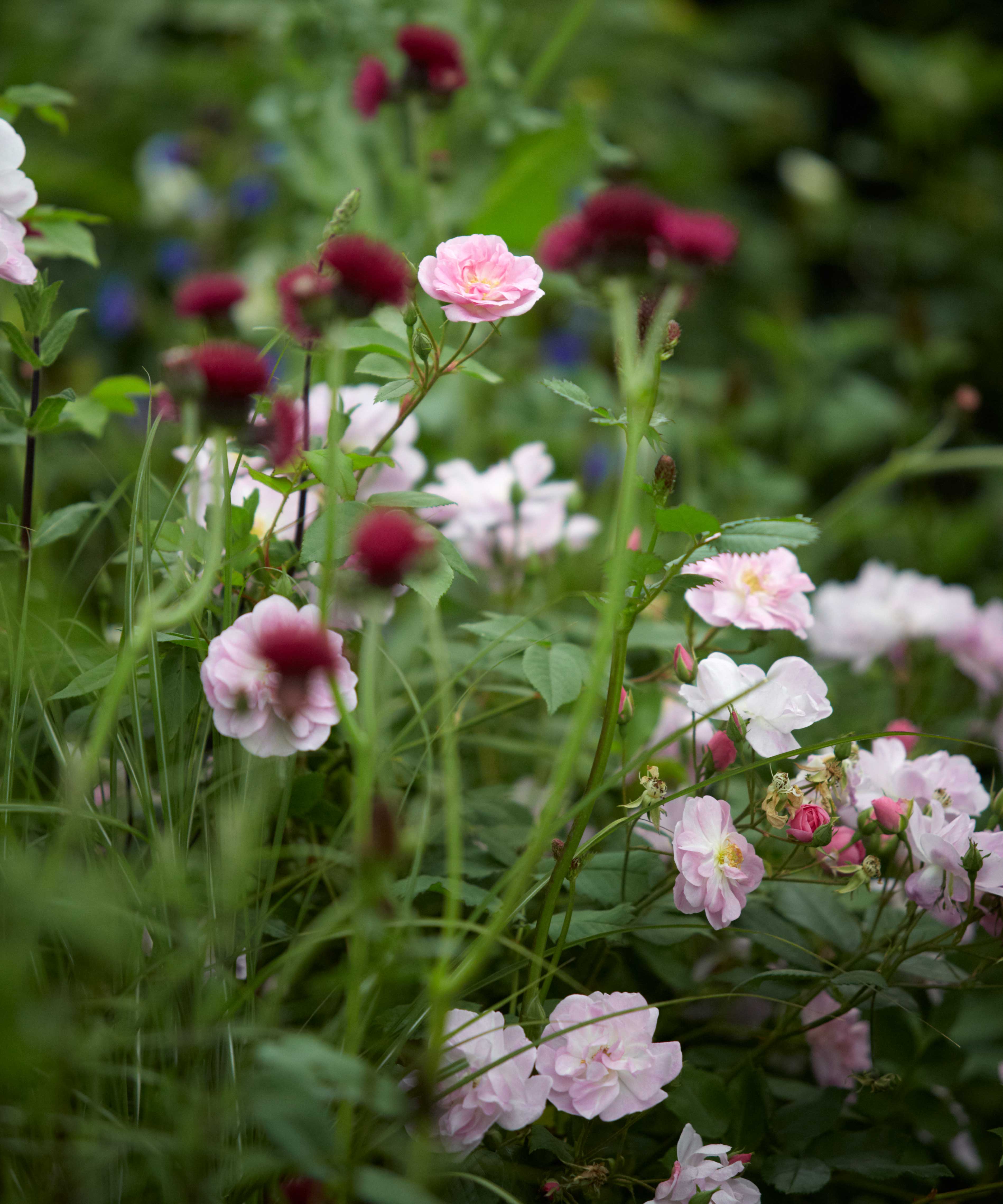
'Most people want any plant to provide interest over as long a period as possible and roses such as floribundas, Hybrid Teas and climbers can flower from as early as April or May right the way through to Christmas,' explains David Stevens. He lists some of his favorites:
- Patio roses are small and ideal for a compact design. Rosa 'Pretty Polly' is a lovely pink, while delightful 'Bella Rosa' is lemon with suffused pink edges.
- With floribundas you are spoilt for choice – try the simply gorgeous red 'Balmoral'.
- Hybrid Tea roses tend to have larger blooms and are taller plants.
- Climbing roses usually repeat flower throughout the season, while ramblers tend to produce a spectacular but single flowering time.
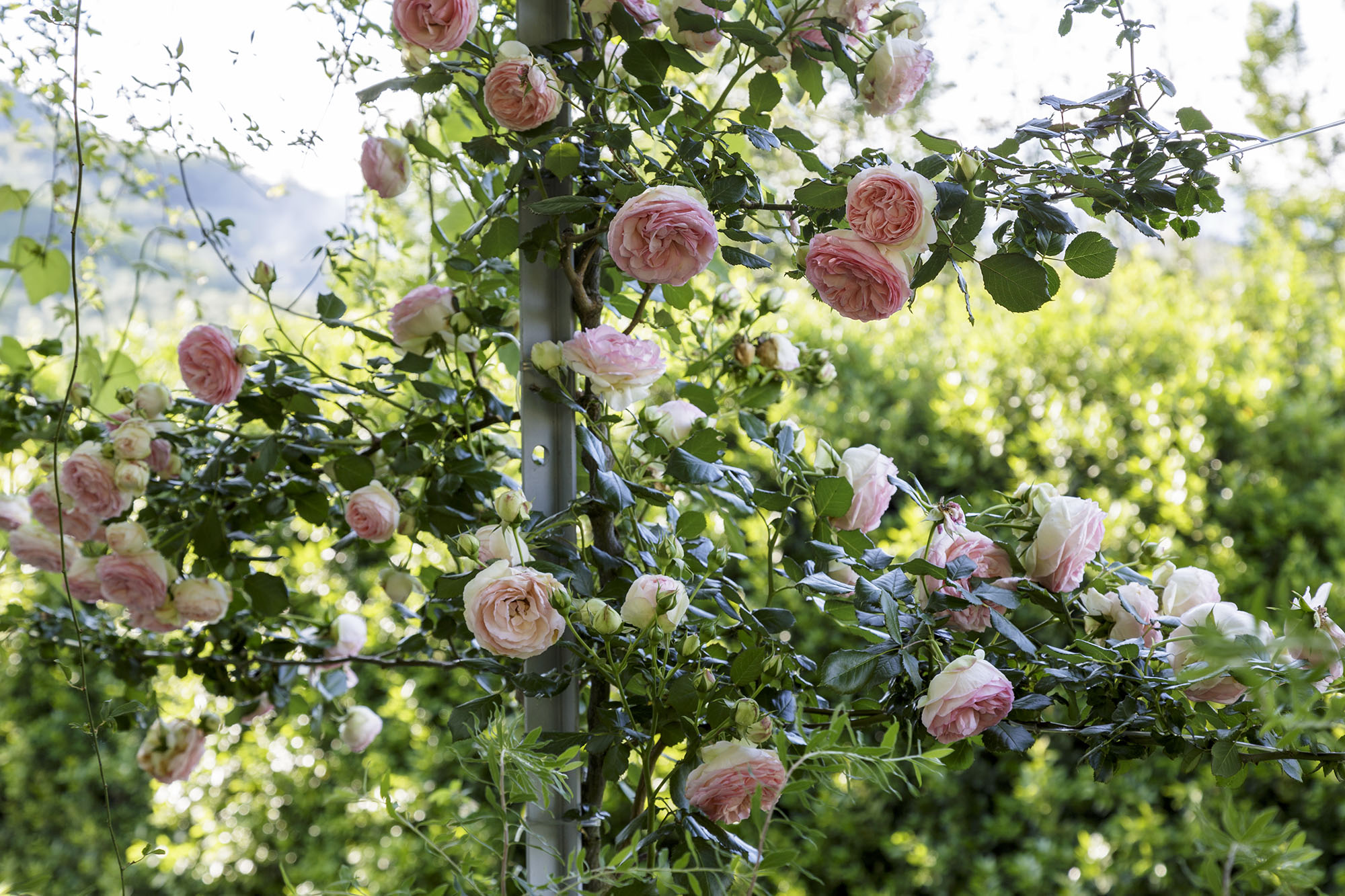
Most roses repeat flower but in a larger scheme, especially, it is well worth including some once flowering old roses as they can add a different type of character.
'It is good to have variation in height in a border. In a formal garden this could be achieved by using tree roses, or standards, and climbers on various supports, such as obelisks, pillars, arches or pergolas. In an informal setting there many tall varieties that could be used at the back of the border ,' explains Michael Marriott.
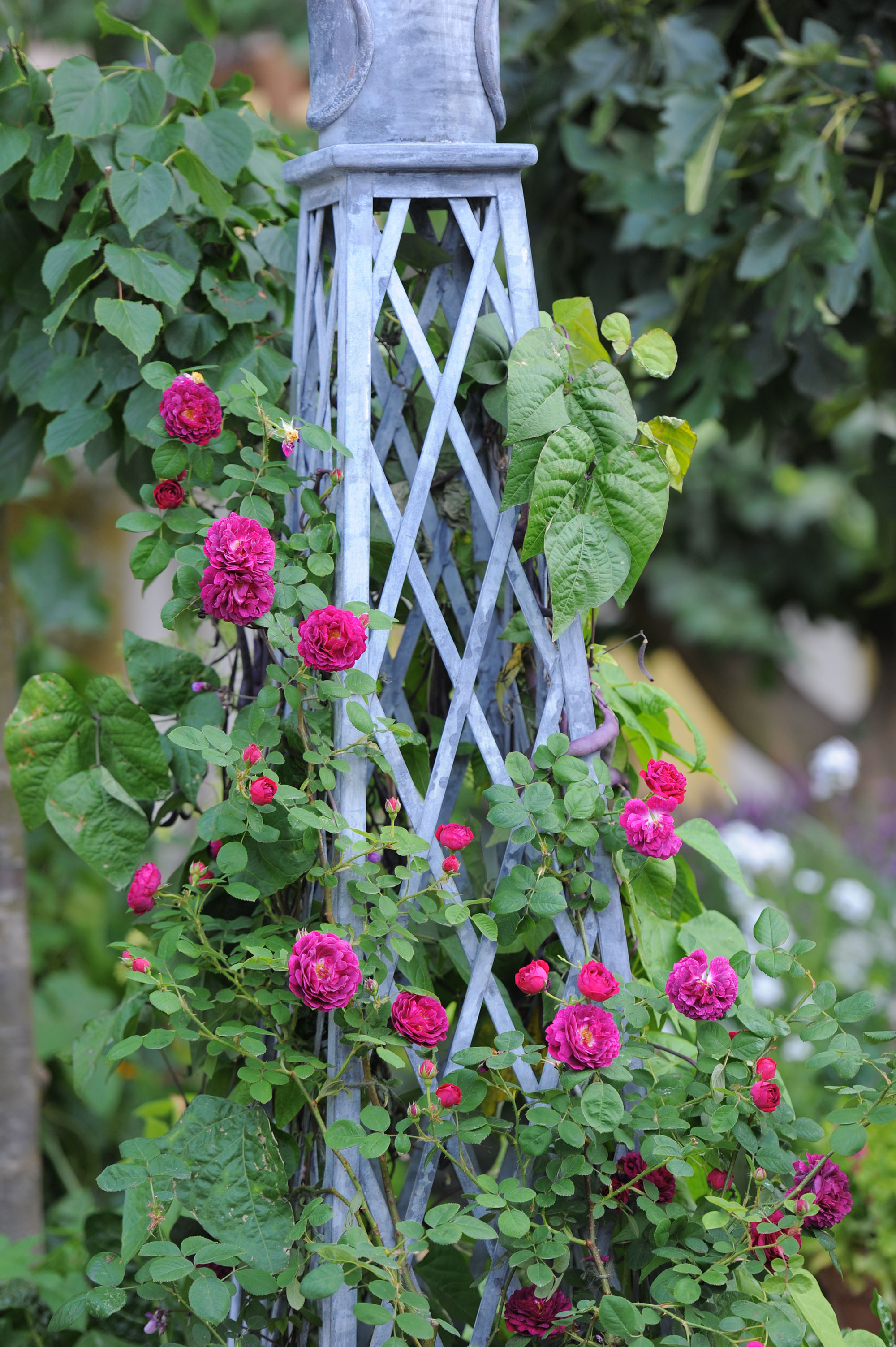
Can you mix rose colors?
Roses are often organised by color in more formal rose garden designs, which has greater impact, but in a more informal, or naturalistic planting design you can experiment more.
'Most roses will mix well together, with the exception of the Hybrid Teas that tend to have rather strong, hard colors and very upright growth that doesn't sit well with the older roses and English Roses,' explains Michael Marriott.
You can choose a palette of one color, or a variety, but think about where the roses are located in the backyard.
‘'Hot' colors draw the eye and cool colors do the opposite, so if you have an area of vibrant red, orange or yellow roses at a distance down the garden it will draw the eye and foreshorten the visual space. Instead, use cool pastel colors, and keep the brighter ones close to the house,’ advises David Stevens.
‘Color choices are key. If you’re going for an all pink palette, for example, make sure that the tones and shades are in harmony,’ adds Jo Thompson.
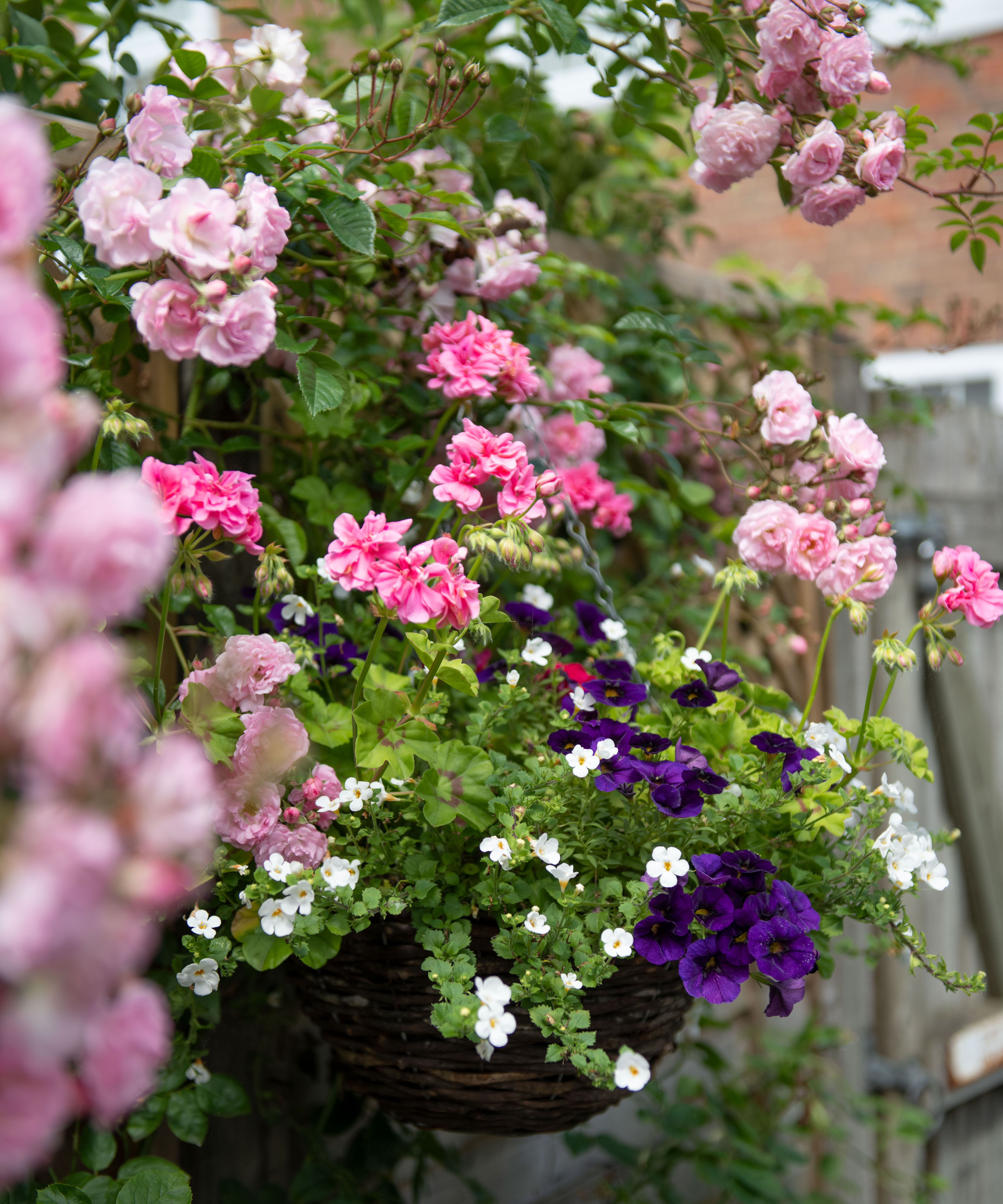
What goes well in a rose garden?
There are many good companion plants for roses that go well in a rose garden design.
Consider biennials and annuals as well as perennials to plant alongside roses.
‘The possibilities of companion plants are endless and the key thing is to let your imagination run wild and see what works. Some companions that I find work include clematis, astrantia, salvias and asters,’ explains designer Richard Miers.
‘Think what you are planting behind the roses, so that it acts as a foil, helping the flowers really stand out. Yew does this really well in a large garden, roses and box are a classic English garden combination, and lavender also works well,’ adds designer Claire Merriman.
Jo Thompson adds hardy geranium, Alchemilla mollis, and alliums to the list of good companion plants.

Do roses need sun or shade?
'Roses generally want sun for at least half of the day. While some varieties are more tolerant of shade than others, generally the more sun will mean more flowers. Shelter is also quite important for many varieties,' explains Claire Merriman.
In warmer climates shade from the afternoon sun may well be beneficial.
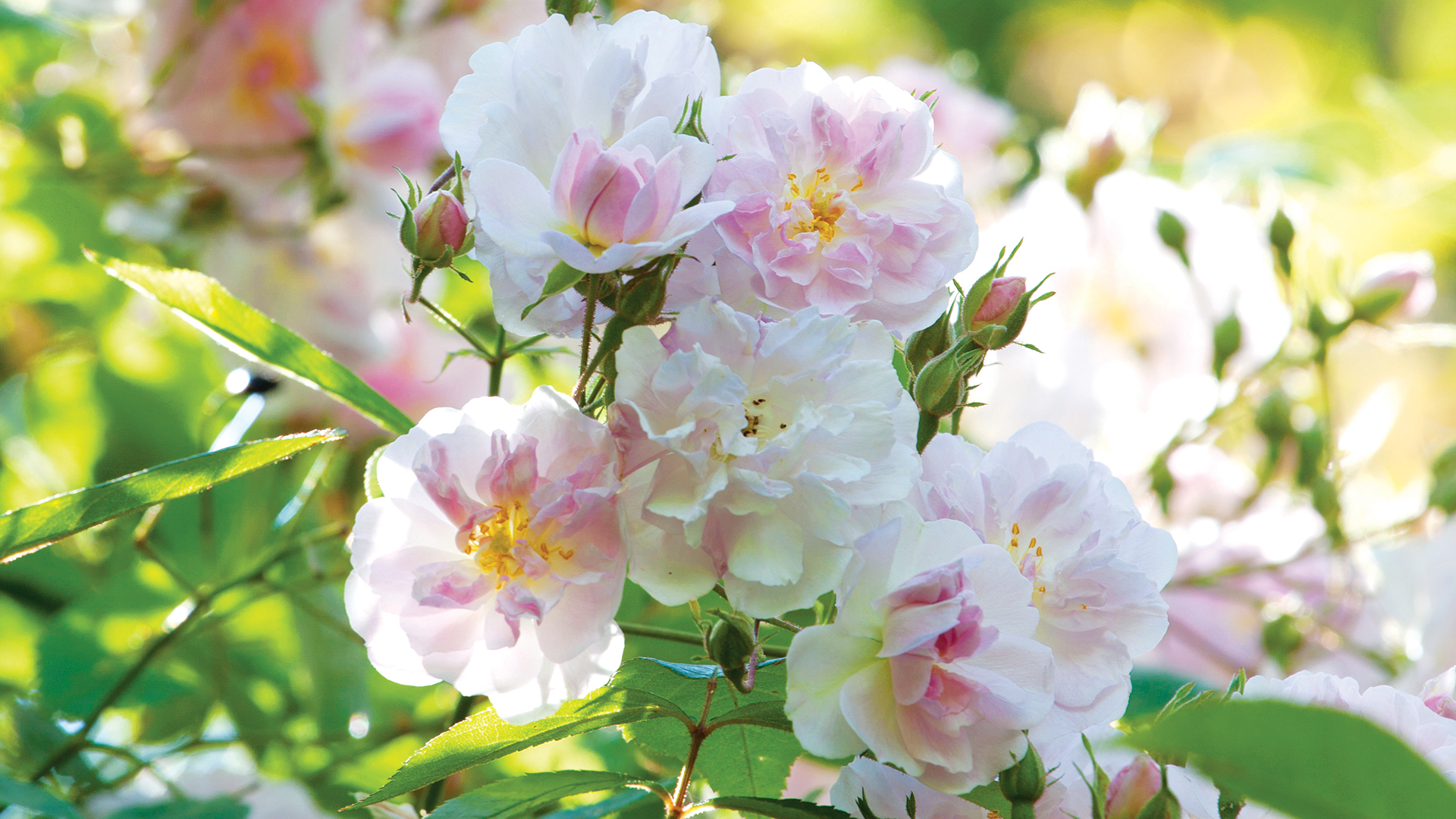
What should you not plant around roses?
You should not plant trees or big hedges or shrubs around roses.
'They generally don't like growing under trees which is as much to do with lack of sun as competition at the roots, and in general too much competition at the root level from say a big hedge is to be avoided,' explains Michale Marriott.
'Also avoid any plants that are too invasive, which might encroach around the base of the rose and starve it of water and nutrients,' he adds.
Sign up to the Homes & Gardens newsletter
Design expertise in your inbox – from inspiring decorating ideas and beautiful celebrity homes to practical gardening advice and shopping round-ups.
Rachel is senior content editor, and writes gardening content for homesandgardens.com, Homes & Gardens magazine, and its sister titles Period Living Magazine and Country Homes & Interiors. She has written for lifestyle magazines for many years, with a particular focus on gardening, historic houses and arts and crafts, but started out her journalism career in BBC radio, where she enjoyed reporting on and writing programme scripts for all manner of stories. Rachel then moved into regional lifestyle magazines, where the topics she wrote about, and people she interviewed, were as varied and eclectic as they were on radio. Always harboring a passion for homes and gardens, she jumped at the opportunity to work on The English Home and The English Garden magazines for a number of years, before joining the Period Living team.
-
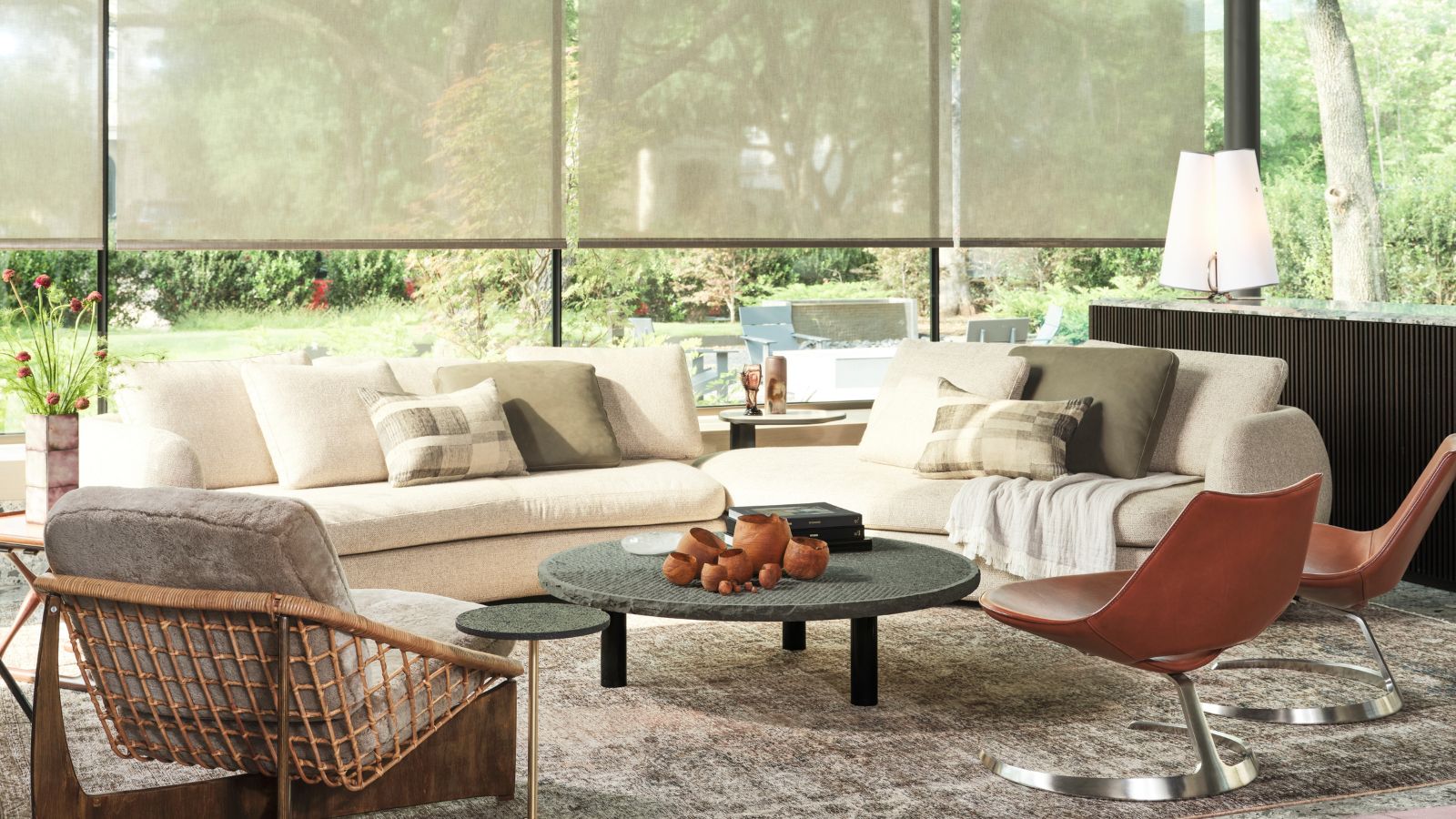 Thoughtful modernism – how one Dallas home makes bold contemporary design feel warm, welcoming, and comfortable
Thoughtful modernism – how one Dallas home makes bold contemporary design feel warm, welcoming, and comfortableWith its mix of textural finishes and carefully curated furnishings, this modernist home is a refreshing retreat
By Karen Darlow Published
-
 'Wick away the ick' – 6 things people with clean laundry rooms always do to make this hardworking space shine
'Wick away the ick' – 6 things people with clean laundry rooms always do to make this hardworking space shineThese tips on how to clean your laundry room will banish grime
By Seraphina Di Mizzurati Published